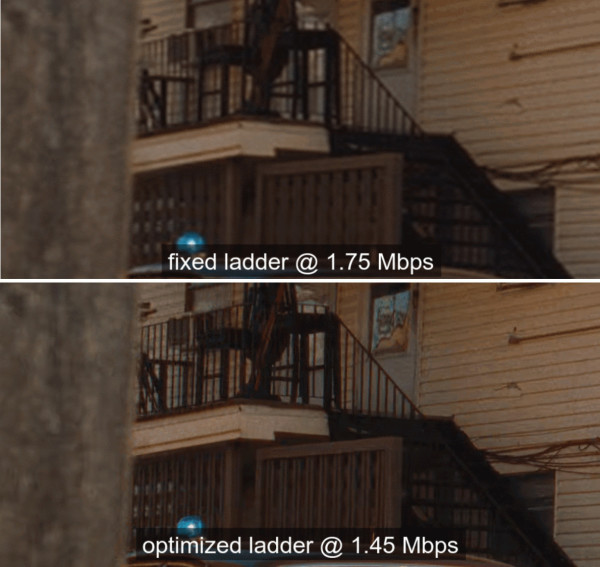[15:07 Sun,6.September 2020 by Thomas Richter] |
Netflix offers 4K movies and series not only as an 8-bit stream, but also as premium content with 10-bit, HFR (High Frame Rate) and/or HDR (High Dynamic Range).  Netflix has a strong interest in saving on the bit rate of its videos because bit rates also cause high data volumes and thus large infrastructure costs for Netflix itself and again for the users (in mobile playback). Netflix has therefore been driving the development of new and better encoding methods for years.  Now Netflix has recompressed all these old 4K movies using the latest technology: each individual camera shot of a movie has been recompressed using the Netflix VMAF method with the optimal bitrate for each shot. Additional optimization potentials resulted from improvements in the codec itself. In the In the following graphic you can see how the new method ("optimized ladder") can be used to achieve the same bitrate with a higher resolution or a lower bitrate with the same picture quality than the old method ("fixed ladder"). The episode of a thriller drama was used here as an example material.  Advantages for the users Over the next few months, Netflix will recompress all 4K versions, and then the HDR versions of all movies using the new methods. For Netflix high-bandwidth subscribers, this means they get the same quality at on average half the bit rate. Users with limited bandwidth will benefit from higher quality at the same (or even lower) bitrate. For example, viewers who were limited to 720p by their network can now watch 1080p or higher resolution instead. The new encoding also greatly reduces the number of annoying playback pauses caused by rebuffering (by 65% on average). Furthermore, all viewers should benefit from the fact that most films start with a higher initial quality. If the first frames are to be played back quickly when a new film is played back, then - depending on the available bandwidth - the picture quality will be briefly reduced before there is enough data for optimum playback. Due to improvements in DRM and the lower bit rate, the Playback delay of new movies reduced by about 10%. Netflix&s progress will also be reflected in other streaming providers, as Netflix is very open about documenting its technical developments and providing open source tools such as deutsche Version dieser Seite: Netflix optimiert seine 4K Filme und spart 50% Daten |





